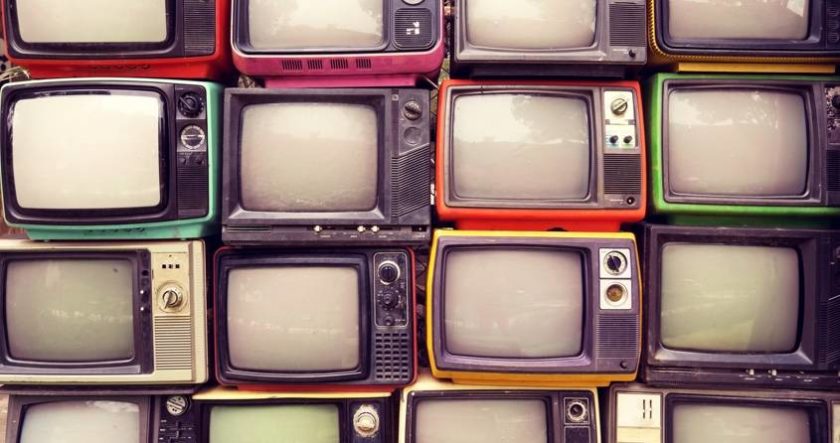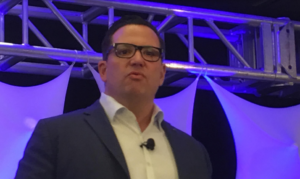M+E Daily

Google, ABC, CBS Execs Talk Advanced TV Challenges
Story Highlights
NEW YORK – Amid ongoing major changes that have taken place across the TV industry, broadcasters and other media companies, as well as technology companies, are continuing their efforts to overcome complex and potentially paradigm-shifting challenges in cross-platform viewing measurement, direct-to-consumer video distribution, next-generation carriage and retransmission agreements, and programmatic ad selling, according to executives of Google, Disney ABC and CBS.
“We work with all of our partners to align across the broadcast, media, entertainment and TV ecosystem…value chain to ensure we’re investing in the right areas to help our partners’ business,” and Google’s areas of focus have included artificial intelligence (AI) and dynamic ad insertion (DAI), Shane Peros, its managing director of global partnerships, broadcast, entertainment and telecommunications, said Nov. 1 in the opening keynote “Reimagine the Commercial Break” at the NYC Television Week’s Advanced Advertising Summit.
CBS “had to address the fact that there are cord-cutters and ‘cord-nevers’ out there” and realized that it had to give those consumers alternative ways to access CBS programs, Dave Morris, its EVP of advanced advertising and client partnerships, said.
CBS opted against participating in Hulu because “we didn’t want to do” revenue sharing with other companies and “wanted to control our future and control our content,” Morris said, noting it opted to go its own way in over-the-top (OTT) streaming video instead. If CBS had become a Hulu investor, the network might not have become as aggressive as it is on its own OTT initiatives that include CBS All Access and its Showtime OTT service, he said. Those two OTT services are expected by CBS to have a combined 8 million subscribers by 2020, he noted.
Similarly, Disney ABC Television Group realized that consumers were “demanding choice and control” when it comes to watching video content and “if you don’t give them choice and control, they’ll watch somewhere else,” Laura Nathanson, its EVP of client and audience solutions, said.
Disney’s investment in BAMTech “really kicked off” its direct-to-consumer video streaming initiatives, she noted. BAMTech’s streaming technology is being used for the ESPN Plus streaming service that recently launched and the Disney streaming service that is scheduled to launch in 2019. (https://www.mesaonline.org/2017/08/09/analysts-predict-impact-planned-disney-streaming-service/)
 The way that Disney looks at the current state of the TV industry is “we’re in the middle of a disruptive period that’s not going to be over for maybe ever,” Nathanson told attendees.
The way that Disney looks at the current state of the TV industry is “we’re in the middle of a disruptive period that’s not going to be over for maybe ever,” Nathanson told attendees.
She predicted that, over the next 10 years, “technology is going to change in ways that we don’t actually know, but it’s going to change what people do.” However, she added: “What’s not going to change is the appetite for premium content which companies like ours” provide many hours of each year.
Morris predicted that, in 10 years, “all television will be either” Internet Protocol-based or delivered via ATSC 3.0, and most TV will be provided on demand. “Sports and news will be as important in 10 years as it is today,” he also predicted.
“The big change” for the TV industry in 10 years will be if specific TV ads can be delivered to each individual household and, “if we can do that, we are going to need a TV platform …that does not exist today” — and the jury’s out on what company will build that platform, Morris said.
In content development, Google uses new technology and data “to help further educate our partners on their audiences – not only now, but their future audience and the audience they’re trying to attract to their content,” Peros said before introducing the Disney ABC and CBS executives.
In content distribution, Google helps its media customers “seamlessly” deliver their content globally across whatever devices viewers want to watch it on and “anytime they want to engage with your content,” he said. Google is also making investments on the audience acquisition/engagement and flexible monetization fronts, he noted.
 Google is enabling advanced TV for its customers via the Google Ad Manager online advertising service and “what we’re really trying to do” is help its media partners to “reimagine the commercial break,” he said. It must be “seamless to be able to deliver broadcast-quality experiences across all screens and all content types,” he noted, adding Ad Manager’s dynamic ad insertion capabilities help achieve that. Also important are the ability to gain insights and evolve measurement capabilities for the future and providing a personalized experience because “an ad doesn’t really matter unless it really speaks to you,” he said.
Google is enabling advanced TV for its customers via the Google Ad Manager online advertising service and “what we’re really trying to do” is help its media partners to “reimagine the commercial break,” he said. It must be “seamless to be able to deliver broadcast-quality experiences across all screens and all content types,” he noted, adding Ad Manager’s dynamic ad insertion capabilities help achieve that. Also important are the ability to gain insights and evolve measurement capabilities for the future and providing a personalized experience because “an ad doesn’t really matter unless it really speaks to you,” he said.
Google is also “investing a lot” in AI to be able to help its customers fully take advantage of their data and drive additional revenue, he pointed out.
Google has a “long list of partners that are working with us” on its various solutions, including A&E Networks, AMC, Bloomberg, CBS, Roku, Sony’s PlayStation Vue “skinny bundle” OTT streaming service and professional sports leagues including Major League Baseball (MLB). On that front, he said: “We’re actually going to have some big announcements coming up this month and next month…and I think it’s really going to help move the market forward in a positive way and speak to some of the other investments that we’ve done,” he said.
Google, meanwhile, is “quickly becoming a global leader” in live DAI, he said, noting “we’ve doubled the size of that business just in the last year” and plans further investments and announcements in that area.
DAI is a server-side video ad technology that enables a company to serve video ads into live linear programming and video on demand content, according to Google, which points out at its web site that DAI “stitches your video content and ads into a single stream, independent of a web page or app, and removes the ad request and ad response process from” the software development kit (SDK).
A big advantage of the technique is that it “reduces the likelihood of client-side errors and produces a seamless TV-like experience without latency or buffering between content and ads,” according to Google. With DAI, a company can “target individual ads for live linear and video on demand programming, obtain multi-screen reach with broad device support, and take advantage of programmatic monetization across all devices” with Ad Exchange for Video, it said.









